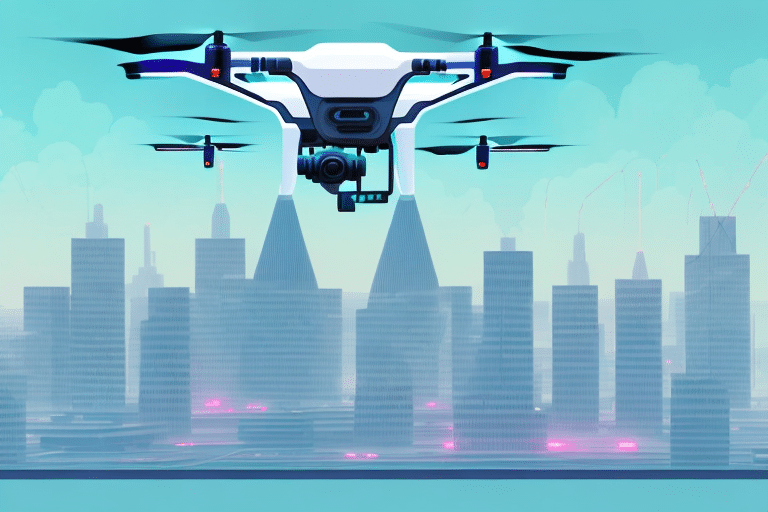Introduction to E-Commerce in the Food Delivery Industry
The integration of e-commerce into the food delivery sector has revolutionized how we access and consume meals. Over the past few years, there has been a significant surge in the utilization of online platforms for ordering meals from local restaurants, meal kit delivery services, and grocery providers. This growth is driven by the enhanced convenience and flexibility that e-commerce offers, allowing individuals to order food effortlessly from the comfort of their homes or workplaces.
The Growth of E-Commerce and Its Impact on the Food Delivery Industry
The e-commerce landscape has experienced exponential growth, and the food delivery industry is a prominent beneficiary of this trend. According to a Statista report, the global online food delivery market was valued at approximately $150 billion in 2023, with projections estimating it to reach over $200 billion by 2026. This expansion is fueled by several factors, including advancements in technology, increased digital literacy, and a growing demand for convenient food options.
The COVID-19 pandemic further accelerated the adoption of online food delivery services as lockdowns and social distancing measures encouraged consumers to opt for contactless delivery solutions. This shift not only expanded the customer base for many restaurants but also highlighted the necessity for improved regulations and fair labor practices for delivery personnel, who often face challenging working conditions.
Convenience of Online Food Delivery Platforms
Online food delivery platforms have significantly streamlined the process of ordering food, eliminating the need for physical restaurant visits or cooking at home. Popular on-demand delivery apps such as Grubhub, DoorDash, and Uber Eats allow users to browse menus, place orders, track deliveries in real-time, and provide reviews—all through their smartphones. This level of convenience appeals to busy individuals seeking quick and reliable meal solutions.
Additionally, these platforms empower small and local restaurants by providing them access to a broader audience. By partnering with delivery services, these establishments can compete with larger chains, offering unique cuisines and fostering a diverse food culture where customers can explore a variety of flavors from different regions.
However, the rise of online food delivery has also raised concerns regarding its impact on the restaurant industry's profitability and food quality. High commission fees charged by delivery platforms can significantly reduce the profit margins of small businesses, while the quality of food can sometimes suffer during transit. Despite these challenges, the popularity of online food delivery shows no signs of diminishing, indicating a continued transformation of the food industry.
The Role of Technology in Enhancing the Food Delivery Experience
Technology is at the forefront of revolutionizing the food delivery experience, enhancing both efficiency and customer satisfaction. Mobile applications offer a seamless and user-friendly interface for ordering, leveraging artificial intelligence (AI) and machine learning to provide personalized meal recommendations based on user preferences and past orders. Data analytics play a crucial role in optimizing delivery routes, reducing order processing times, and increasing the accuracy of deliveries, thereby facilitating faster and more reliable service.
Innovations such as delivery robots and drones are also making strides in the industry. These autonomous delivery systems are equipped with advanced sensors and navigation technologies, enabling them to traverse urban environments and deliver food directly to customers. This not only expedites the delivery process but also addresses labor shortages and reduces operational costs, contributing to a more sustainable and eco-friendly delivery model.
Furthermore, the adoption of virtual menus and online ordering systems has become increasingly important. These technologies allow restaurants to manage orders efficiently, reduce wait times, and maintain service continuity, especially during unforeseen circumstances like pandemics. By offering these digital solutions, restaurants can enhance their operational capabilities and provide customers with a consistent and reliable dining experience.
How E-Commerce Platforms are Enabling Restaurants to Expand Their Reach
E-commerce platforms have fundamentally changed the way restaurants interact with their customers, providing tools and services that enhance visibility and operational efficiency. By listing their menus on these platforms, restaurants can increase their online presence, attracting a wider and more diverse customer base beyond their immediate geographic location. This expanded reach is particularly beneficial for small and independent restaurants looking to grow their business without significant upfront investments.
These platforms offer a range of analytical tools that allow restaurants to monitor sales data, track customer reviews, and manage orders effectively. By utilizing these insights, restaurants can make informed, data-driven decisions to optimize their offerings, improve customer satisfaction, and boost sales performance.
Moreover, e-commerce platforms facilitate personalized marketing strategies. Through data analysis, these platforms can suggest tailored promotions and menu items to users, enhancing the customer experience and fostering loyalty. This targeted approach not only benefits consumers by providing relevant options but also aids restaurants in maximizing their marketing efforts and revenue streams.
The Benefits and Drawbacks of Ordering Food Online
Online food delivery offers numerous advantages, such as unparalleled convenience and a vast array of choices. Consumers can effortlessly compare prices, explore diverse menus, and take advantage of exclusive promotions and discounts that might not be available when ordering directly from restaurants. The ability to order food from anywhere, at any time, caters to individuals with hectic schedules, limited mobility, or those simply seeking the ease of home delivery.
However, there are notable drawbacks to consider. The quality and temperature of food during transit can sometimes be compromised, leading to a less satisfying dining experience. Additionally, restaurants may impose higher prices or limit their menu options for delivery purposes to offset the costs associated with using third-party platforms. Environmental concerns also arise from the extensive use of single-use packaging, contributing to increased waste.
Despite these challenges, the benefits of online food delivery continue to outweigh the drawbacks for many consumers. The ongoing advancements in packaging technology and delivery logistics are promising solutions to mitigate some of these issues, making online food ordering an increasingly viable and attractive option.
Influence of Online Reviews on the Food Delivery Industry
Online reviews have become a pivotal factor in the food delivery industry, guiding consumer choices and shaping restaurant reputations. Platforms that incorporate user reviews provide valuable feedback to restaurants, enabling them to refine their offerings and enhance service quality. Positive reviews can significantly elevate a restaurant's online standing, attracting new customers and fostering loyalty among existing ones.
The competitive landscape has intensified as a result of the transparency that online reviews offer. Restaurants are now incentivized to maintain high standards in both food quality and customer service to secure favorable reviews and maintain a strong online presence. This shift has led to innovation and the introduction of unique menu items as establishments strive to differentiate themselves in a crowded market.
Moreover, some restaurants have adopted strategies to encourage customer reviews, understanding the critical role that feedback plays in their success. By actively engaging with customer reviews and addressing concerns promptly, restaurants can build trust and demonstrate their commitment to quality, further cementing their reputation in the industry.
The Rise of Meal Kit Delivery Services: A New Culinary Revolution
Meal kit delivery services have introduced a novel approach to cooking and dining at home. These services provide pre-portioned ingredients along with detailed recipe cards, allowing consumers to prepare restaurant-quality meals without the hassle of sourcing ingredients or planning menus. Catering to a variety of dietary preferences and culinary tastes, meal kits offer flexibility and convenience, encouraging home cooking and experimentation with diverse cuisines.
One of the significant advantages of meal kit services is the reduction of food waste. By providing exact ingredient quantities needed for each recipe, these services minimize the likelihood of unused ingredients going to waste. Additionally, many meal kit companies prioritize sustainability by sourcing ingredients from local and environmentally responsible farms, thereby reducing the carbon footprint associated with food production and transportation.
Meal kits have gained popularity among busy professionals and families seeking nutritious and time-saving meal solutions. The ability to prepare meals quickly without sacrificing quality or flavor makes meal kits an appealing option for those with demanding lifestyles. As consumer demand for convenience and healthy eating continues to rise, meal kit delivery services are poised for further growth and innovation in the coming years.
Sustainable Packaging Solutions in the Food Delivery Industry
The environmental impact of the food delivery industry, particularly regarding packaging waste, has garnered increasing attention. In response, e-commerce platforms and restaurants are adopting sustainable packaging solutions to mitigate their ecological footprint. Innovations such as biodegradable materials, recyclable containers, and compostable packaging are becoming more widespread, significantly reducing the volume of waste generated by food deliveries.
In addition to sustainable materials, some delivery services are exploring the use of electric vehicles and low-emission delivery methods to decrease carbon emissions. The integration of these green technologies not only benefits the environment but also aligns with the growing consumer demand for eco-friendly practices.
Another promising development is the implementation of reusable packaging systems. Certain restaurants and delivery services offer customers the option to receive their orders in reusable containers, which can be returned and sanitized for future use. This initiative not only reduces waste but also fosters a culture of sustainability among consumers and businesses alike. By embracing these sustainable practices, the food delivery industry is taking meaningful steps toward environmental stewardship and setting a positive example for other sectors.
The Future of the Food Delivery Industry: Emerging Trends and Innovations
The food delivery industry continues to evolve, driven by advancements in technology and shifting consumer preferences. Emerging trends such as drone and robot deliveries promise to revolutionize the delivery process, offering faster and more cost-effective methods. These autonomous delivery systems are expected to become more prevalent, enhancing efficiency and reducing reliance on human labor.
Virtual kitchens, also known as ghost kitchens, represent another significant innovation. These facilities house multiple restaurant brands under one roof, optimizing kitchen space and allowing for a diverse range of culinary offerings without the need for traditional dining spaces. Virtual kitchens enable restaurants to expand their reach and experiment with new menu items, catering to a broader audience while minimizing operational costs.
Furthermore, the integration of artificial intelligence and machine learning will continue to refine personalization in the food delivery experience. Enhanced data analytics will provide deeper insights into consumer behavior, enabling platforms and restaurants to tailor their services and offerings more precisely to individual preferences.
The industry is also expected to witness a continued emphasis on sustainability, with ongoing efforts to adopt environmentally friendly practices and reduce waste. As consumer awareness and demand for sustainable options grow, the food delivery sector will likely prioritize green initiatives, ensuring long-term viability and positive environmental impact.
Overall, the synergy between e-commerce and the food delivery industry is set to drive further innovation and growth. As technology advances and consumer needs evolve, the food delivery landscape will continue to adapt, offering more efficient, sustainable, and personalized solutions to meet the demands of a dynamic market.
Conclusion
E-commerce has undeniably transformed the food delivery industry, reshaping how we order, receive, and enjoy our meals. The convenience and adaptability provided by online platforms have made food delivery a staple in modern living, catering to the needs of a diverse and demanding consumer base. While challenges such as operational costs and environmental impact persist, ongoing innovations and a commitment to sustainability are paving the way for a more resilient and eco-friendly future.
As technology continues to advance and consumer preferences evolve, the food delivery industry is poised for continued growth and innovation. The integration of cutting-edge technologies, the rise of new business models like virtual kitchens, and a sustained focus on sustainability will drive the next wave of transformation, ensuring that the industry remains responsive to the changing landscape and continues to meet the culinary needs of consumers worldwide.






















